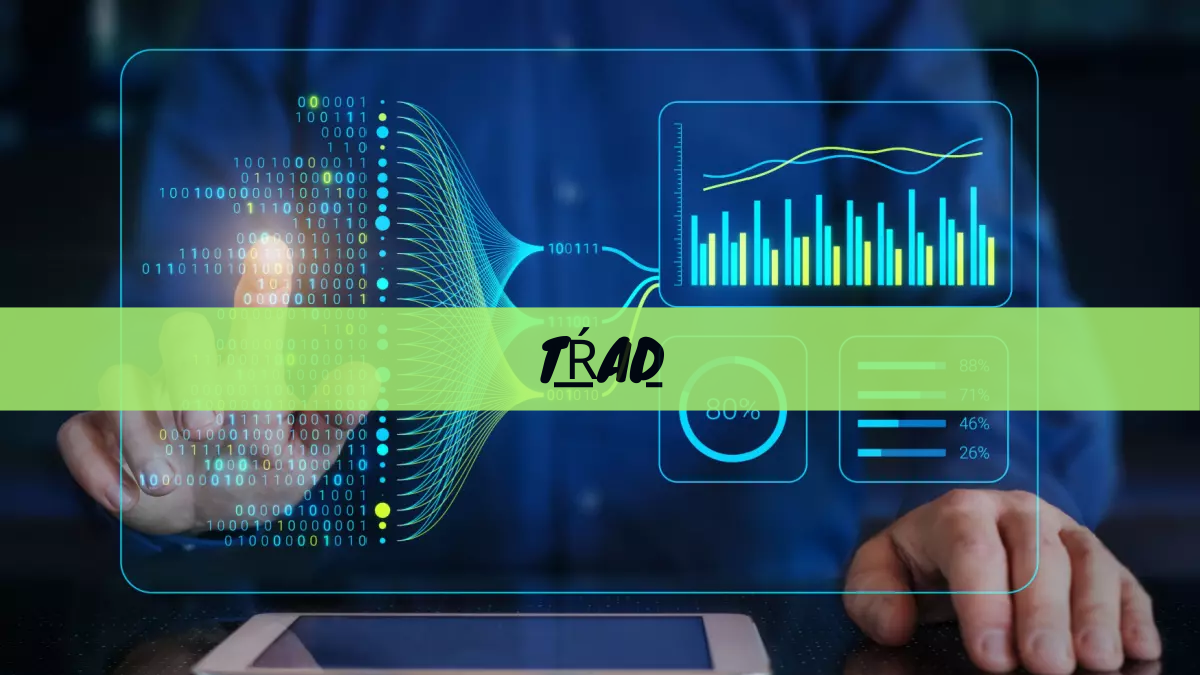Understanding Tŕad – A Deep Dive into Algorithmic Data Analytics
Introduction
In today’s technologically driven world, data analytics and machine learning are pivotal. One emerging concept in this field is “tŕad.” This article aims to provide a comprehensive understanding of tŕad, explaining its importance, applications, and future prospects. We will delve into its technical aspects, benefits, and the way it transforms data into actionable insights.
1. What is Tŕad?
Tŕad is a specialized algorithmic process designed for data analytics and machine learning. It involves sophisticated algorithms that analyze large datasets to identify patterns, trends, and correlations. Unlike traditional data analysis methods, tŕad leverages advanced machine learning techniques to provide more accurate and actionable insights.
2. The Importance of Tŕad in Technology
Tŕad has revolutionized how businesses and organizations approach data. It enables them to make informed decisions based on data-driven insights. By automating the analysis process, tŕad reduces human error and increases efficiency. It is crucial in industries where data is a significant asset, such as finance, healthcare, and marketing.
3. How Tŕad Works: An Overview of the Algorithmic Process
The tŕad algorithm follows a series of steps:
- Data Collection: Gathering data from various sources.
- Data Cleaning: Removing inaccuracies and inconsistencies.
- Data Processing: Transforming raw data into a suitable format.
- Algorithm Application: Applying the tŕad algorithm to analyze the data.
- Result Interpretation: Extracting meaningful insights from the analysis.
4. Applications of Tŕad in Various Industries
Tŕad is versatile and can be applied in numerous fields:
- Finance: Risk assessment, fraud detection, and investment analysis.
- Healthcare: Predicting patient outcomes, personalized treatment plans, and disease outbreak prediction.
- Marketing: Customer segmentation, personalized advertising, and market trend analysis.
- Retail: Inventory management, sales forecasting, and customer behavior analysis.
5. Benefits of Using Tŕad
Using tŕad offers several advantages:
- Accuracy: Provides more precise insights than traditional methods.
- Efficiency: Automates the data analysis process, saving time and resources.
- Scalability: Can handle large datasets, making it suitable for big data applications.
- Predictive Power: Helps in forecasting future trends and behaviors.
6. Challenges and Limitations of Tŕad
Despite its benefits, tŕad has some challenges:
- Complexity: Requires specialized knowledge to implement and interpret.
- Data Quality: Dependent on the quality of the input data.
- Cost: High initial investment in technology and expertise.
7. Future Prospects of Tŕad
The future of tŕad looks promising with advancements in technology:
- Enhanced Algorithms: Continuous improvement in algorithmic techniques.
- Integration with AI: Combining tŕad with artificial intelligence for more advanced applications.
- Increased Accessibility: Making tŕad more accessible to small and medium-sized businesses.
8. Tŕad in Data Analytics and Machine Learning
Tŕad plays a crucial role in the broader context of data analytics and machine learning. It enhances the capability of systems to learn from data and make autonomous decisions. This integration is pivotal for developing intelligent systems that can adapt and evolve.
9. Case Studies and Real-World Examples
- Finance: A leading bank used tŕad to detect fraudulent transactions, reducing fraud by 30%.
- Healthcare: A hospital implemented tŕad to predict patient readmissions, improving patient care and reducing costs.
- Retail: An online retailer utilized tŕad for customer segmentation, resulting in a 20% increase in sales.
10. How to Implement Tŕad in Your Business
Implementing tŕad involves several steps:
- Assess Needs: Identify areas where tŕad can add value.
- Choose the Right Tools: Select appropriate software and hardware.
- Hire Experts: Employ data scientists and analysts with expertise in tŕad.
- Monitor and Evaluate: Continuously monitor the performance and make necessary adjustments.
11. Frequently Asked Questions
Q: What makes tŕad different from traditional data analysis methods?
A: Tŕad uses advanced machine learning algorithms, providing more accurate and actionable insights.
Q: Is tŕad suitable for small businesses?
A: Yes, with increasing accessibility and cost-effective solutions, tŕad is becoming feasible for small businesses.
Q: How does tŕad improve decision-making?
A: By providing data-driven insights, tŕad helps businesses make informed and strategic decisions.
Q: What are the costs associated with implementing tŕad?
A: Costs can vary but generally include technology investment and hiring specialized personnel.
Q: Can tŕad handle real-time data?
A: Yes, advanced tŕad algorithms are capable of processing and analyzing real-time data.
12. Conclusion
Tŕad is a transformative technology in data analytics and machine learning. Its ability to provide accurate and actionable insights makes it invaluable across various industries. As technology advances, the applications and benefits of tŕad will continue to grow, making it a crucial tool for businesses looking to leverage data for strategic advantage.
By understanding and implementing tŕad, organizations can unlock new opportunities and stay ahead in the competitive landscape. Whether in finance, healthcare, marketing, or retail, the power of tŕad can drive innovation and efficiency, paving the way for a data-driven future.







